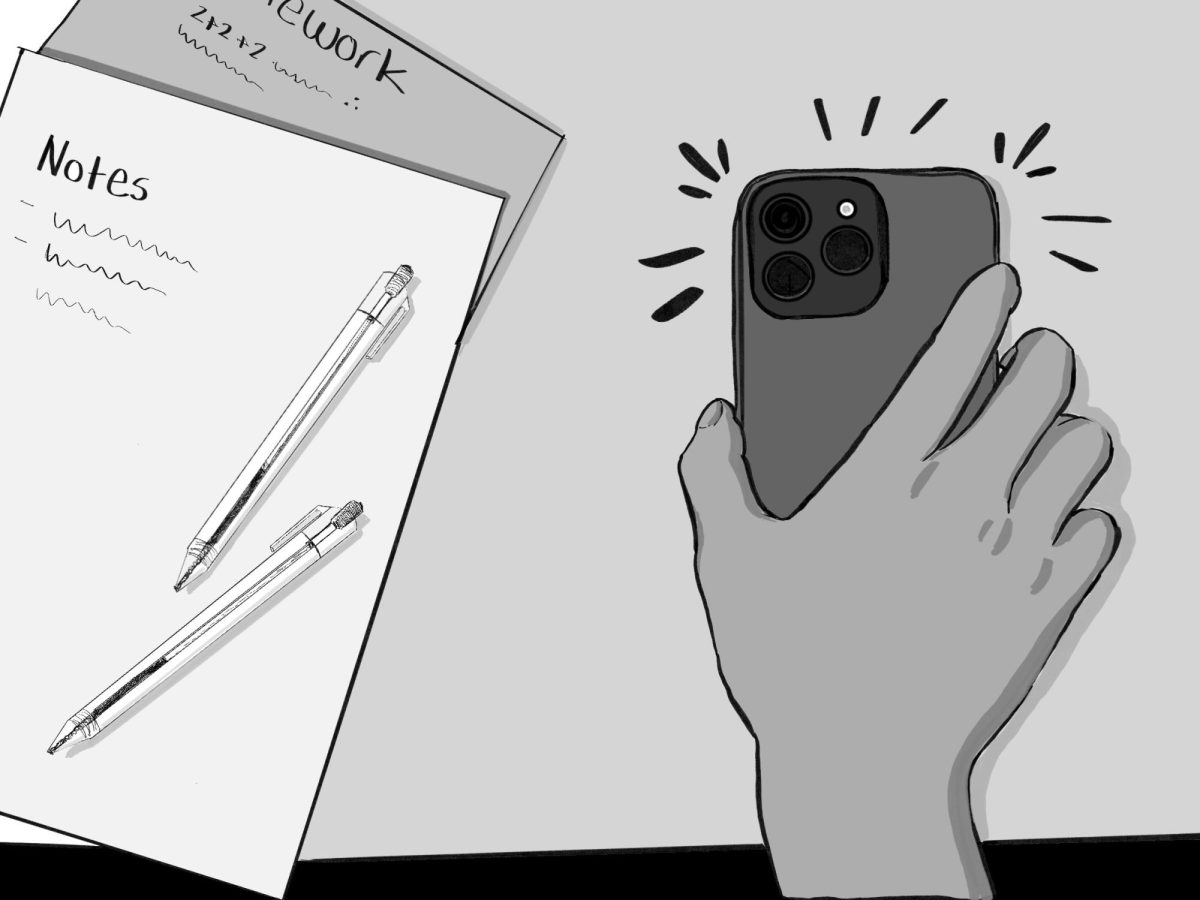At every restaurant, dinners are split into two. The clank of dishes on tables sets off a dichotomy between those who want to publicize the moment and those who want to savor it. Half of restaurant-goers scramble to grab phones from back pockets, bags and laps while the other half snatch up the closest utensils at hand.
I belong to the latter group and so do my friends. We, bound by our common appreciation, relish the moment, the symphony of flavors and textures colliding with our longing taste buds. It is a satisfaction so complex that it could never be replicated through a series of pixels. Wasting time trying to get perfect lighting for Instagram or Snapchat as a piping hot plate of paella sits waiting to be tasted confounds us.
Our meals are marked by a centerpiece of piled iPhones. Ever since eighth grade, we have made a tradition of stacking our phones aside. The honor of covering the check is bestowed upon whomever is the first to touch a phone. To this day, no one is itching to take part in cellular activities at the cost of the check (particularly on a high school budget). Our dining experience is not viewed through devices; instead, it is reflected off of our blank, black screens.
The first bite of a meal is critical and cannot be distracted. It is a review for not only the consumer but also for surrounding diners. With full mouths, our only sources of communication are our ears, eyes and utensils. We catch each other’s reactions in real time, rather than through star ratings on Yelp. (For some dishes, five stars simply do not do justice.) The scraping of forks and knives form a rhythm; the speed of the beat indicates the level of our eagerness, and for that first bite, the tempo of chewing denotes how long we want this fleeting moment of food – and food only – to last.
I am one to work rapidly, cutting and skewering, a feat that could not be accomplished with a device in hand. Each second counts for my voracious appetite. But then, the first bite enters my mouth and time stops.
With each consecutive spoonful, the ambient noises grow. Someone speaks. Our conversation crescendos in volume and topics. The silence had united us and now our discussions are as strong as ever.
Meals become a medium through which our heterogeneous group comes together, discusses our differences, and absorbs this shared experience. We become a little family of our own.
As we leave Harvard-Westlake, the occasional friend request or comment might pop up in the notifications tab of our phones or laptops. However, this is an inadequate method of perpetuating the legacy of our friendships and acquaintances. Rather, we should be fulfilled through spiritual experiences, classrooms and, of course, the dining table.
Biologically, dining is a necessity for life. But for us, it should be a means of combining bonding and satisfaction, transcending technology’s constraints.
































